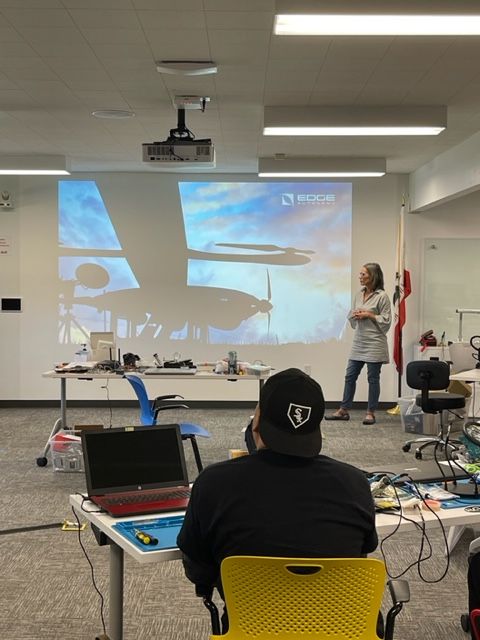Spotlight on Continuing Education and Career Opportunities
Careers and education in STEM fields have come into sharper focus in recent years, with employment in STEM occupations growing 79% since 19901. Additionally, the number of STEM jobs is projected to grow 8% through 2029—a higher rate than non-STEM jobs—with positions in computing, engineering, and advanced manufacturing leading the way2.
While many STEM initiatives are concentrated on the next generation of scientists, engineers, and mathematicians, it is also important to foster engagement with individuals who are looking to change careers or take steps to upskill through education and training. With an estimated 3.5 million STEM jobs that will need to be filled in the United States by 20253, encouraging STEM growth within the existing workforce is just as important as encouraging young scholars.
Community Involvement
Headquartered in San Luis Obispo, California, Edge Autonomy not only puts a high priority on building state-of-the-art small unmanned aerial systems (SUAS), but also on fostering career growth within the company and within the community. We have an active partnership with SLO Partners, an economic development initiative of the San Luis Obispo County Office of Education. By working with local employers and those within the community who want to change their career trajectory, SLO Partners designs specific fast-tracked bootcamp training programs to teach in-demand skills. Through this model, employees and local companies are able to grow together, benefiting the community and the overall health of the local STEM arena.
At a recent Modern Manufacturing bootcamp, Edge Autonomy employees were able to address students at SLO Partners about the innovative work the company does and the exciting opportunities we have in San Luis Obispo. Liam Limon, an alumnus of the SLO Partners boot camp program and Electronics Production Supervisor for Edge Autonomy, helped to lead the eight-week program as students built and flew quad copter drones.
“I connected with Edge Autonomy because of their work with SLO Partners,” said Liam. “When I went through the boot camp they brought in a VXE-30 aircraft and assembled it in the class. When the course ended I got in touch with the company about local electronics positions and have been with Edge Autonomy ever since.”
Eileen Faley, Senior HR Generalist with Edge Autonomy in San Luis Obispo, presented students with additional information about the company and the work we do across production, engineering, and manufacturing.
“Choosing a career in a STEM field can be a transformative decision with many benefits,” said Eileen. “These are high-demand jobs both within Edge Autonomy and throughout the industry as a whole. I’ve found that these students are interested in continual intellectual and personal growth, and I really enjoy working with them as they learn about emerging technologies and opportunities.”
STEM educators play a crucial role in nurturing our nation’s innovators, thinkers, and leaders, and Edge Autonomy employees are paying it forward through their work with SLO Partners. By actively encouraging and supporting those pursuing STEM fields, continuing education unlocks potential, ignites curiosity, and empowers a brighter future.
“I am always interested in meeting people who are interested in the same things I’m interested in, and it’s been really rewarding to talk to the students at SLO Partners,” said Liam. “I get to share my knowledge. I really enjoy teaching people and passing along the knowledge I’ve gained to help them as they further their careers.”
Paula Mathias-Fryer, Senior Director of SLO Partners, has seen a great benefit in giving local residents new skills to help place them in ever-evolving industries.
“Upskilling can expand skills to address gaps and build talent,” said Paula. “Developing advanced skills can also help the local economy as residents and businesses thrive together. We have seen a 30% average salary increase for employees after completing our program, and the companies we partner with develop a more robust and diverse talent pipeline with local, pre-vetted workers.”
STEM is an ongoing journey of discovery and lifelong learning. As long as we prioritize actively supporting continuing education, mentoring aspiring learners, and creating opportunities to thrive in these fields we will continue to see innovation and growth.

